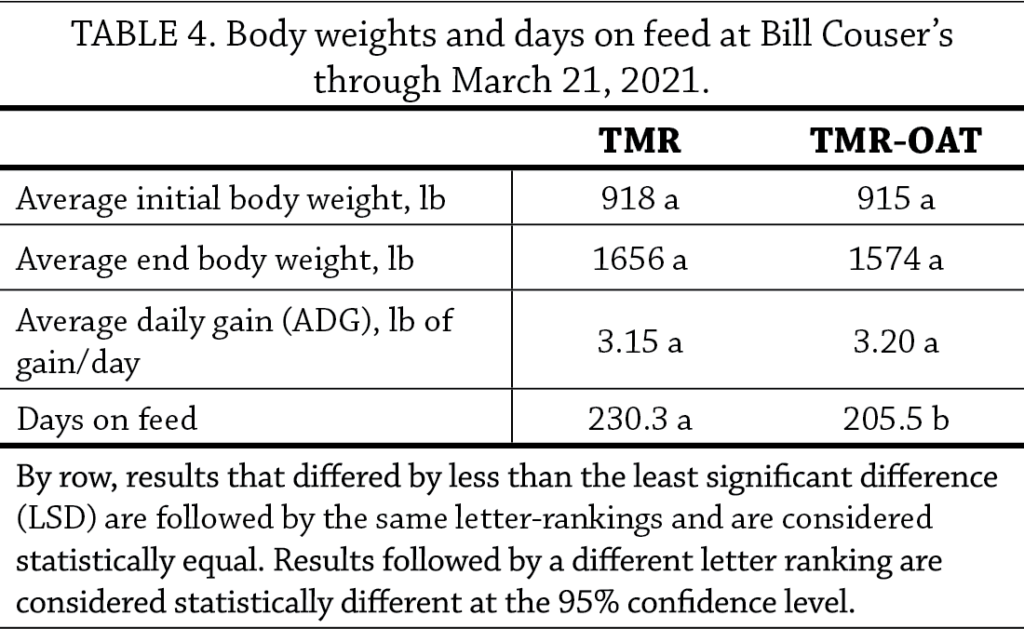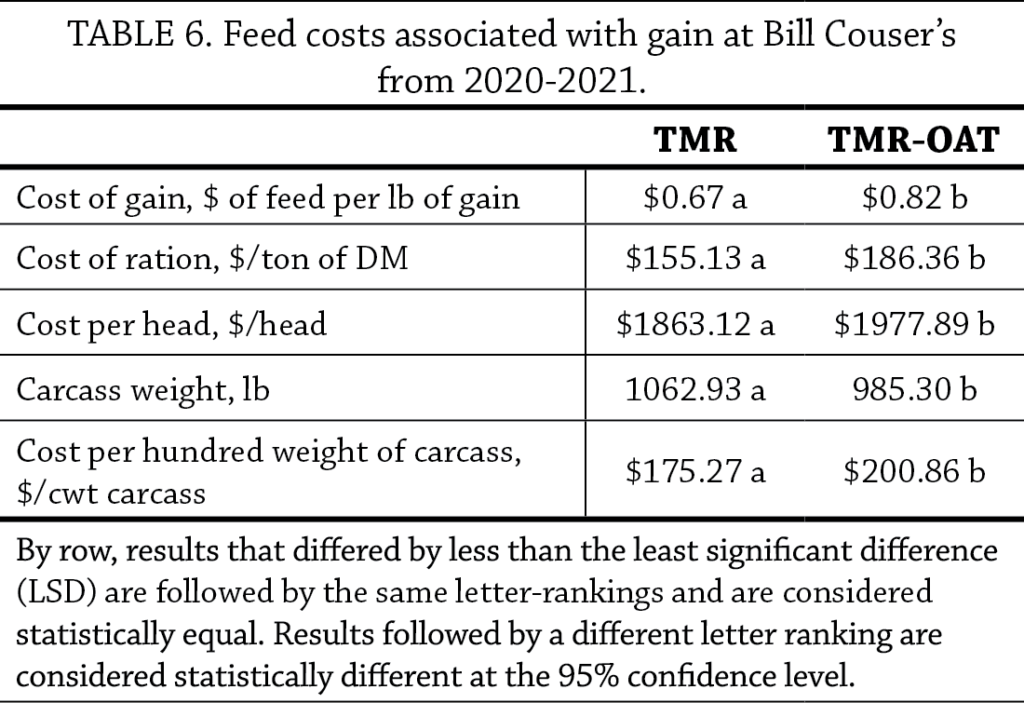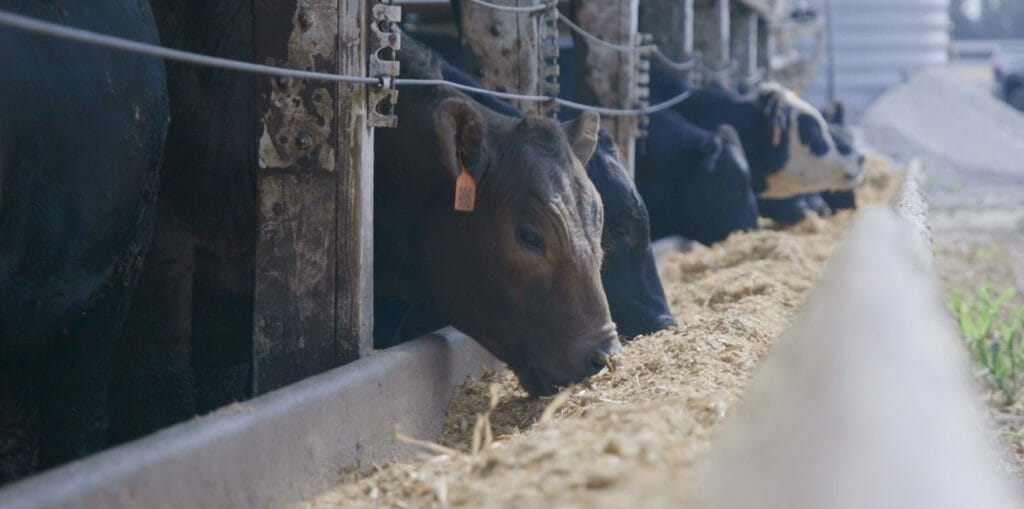Feeding Oats to Cattle
Iowa used to be the top oat-producing state, with 6 million acres of oats grown in 1950. In 2020, 73,000 acres of oats were grown in Iowa.
The disappearance of oats and other small grains from the Iowa landscape has resulted in a lack of on-farm diversity, less cover crop use and primarily corn-heavy total mixed rations (TMR) for feedlot cattle.
But, what if an oat-based total mixed ration could deliver the same quality beef product without sacrificing gain and animal health?

Whole oats, right, were processed then incorporated into the total mixed ration at a rate of 22% dry matter.
On-Farm Trial
As part of PFI’s Cooperators’ Program, Bill Couser, owner and operator of Couser Cattle Company – a 10,000-head feedlot and 5,000-acre row crop operation – evaluated finisher cattle performance when fed oats compared to a standard corn ration. Bill will use the results to help him decide how and if he will diversify his cropping system in the future.
“When I look at soil health and water quality, oats seem to be a natural fit, and I want to see what we can do for our land,” Bill says.
From June 2020 to March 2021, Bill fed two groups of cattle until slaughter time (referred to as “fed to finish”) with one of two rations: TMR or TMR-OAT. The TMR was a standard finishing ration and the TMR-OAT contained a 22% inclusion rate for oats, which replaced a portion of corn. The ration was fed over a period of 230 and 205 days, respectively, and pen conditions were kept the same.
Animal Performance & Economics
The TMR-OAT-fed group statistically gained the same as cattle fed a standard TMR (3.20 pounds gained per day versus 3.15 pounds gained per day) and maintained the same animal performance, morbidity rates and carcass characteristics. Oat-fed cattle graded “incredibly well” with 85.36% grading USDA Prime and Choice.
Cost was the most noticeable difference during this trial. Cost of feed per pound of gain was statistically higher with the TMR-OAT ration, costing $1,978 per head to finish an animal compared to $1,863 with corn, a difference of approximately $115.
Bill purchased oats for $3.97 per bushel and corn for $4.37 per bushel – but keep in mind that oats yield 32 pounds per bushel as compared to corn at 56 pounds per bushel.
Oats would need to be purchased at around $2.75 per bushel to make the cost to finish equal. Regarding cattle performance, oats proved to be an effective replacement for corn in a finishing ration.
Next Steps
Adding oats into a livestock and cropping system can add diversity, help control input costs when paired with legume cover crops and provide soil health and water quality benefits all while delivering the same quality carcass.
The next steps of this trial include evaluating the ecological footprint of feeding oats on beef production and evaluating animal performance on rations that include different small grains such as wheat, hybrid rye or triticale.



